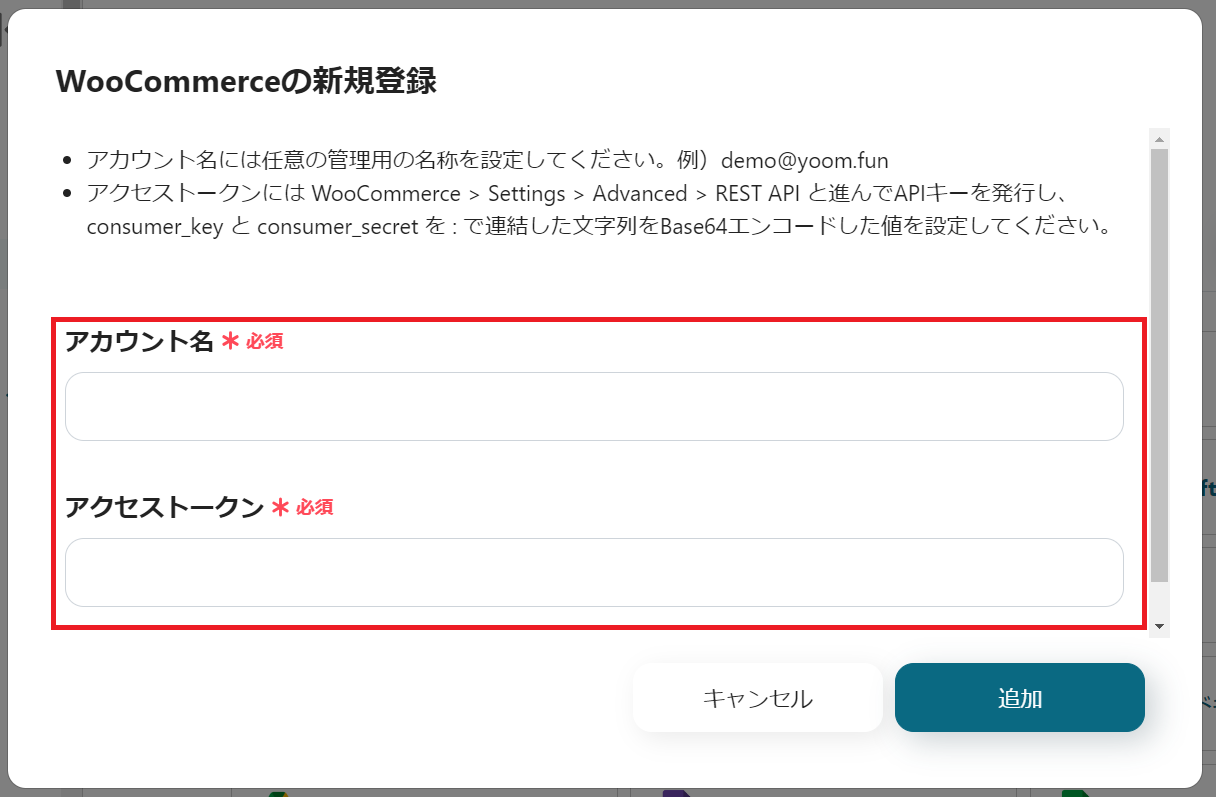You can set it up in the following 4 steps.
- Register WooCommerce and Google Sheets as My Apps
- Open the template
- Set triggers and actions
- Verify the automation between WooCommerce and Google Sheets
If you are not using Yoom, please register for free here.
If you are already using Yoom, please log in.
[What is Yoom]
Step 1: Register WooCommerce and Google Sheets as My Apps
Please register WooCommerce and Google Sheets as My Apps in Yoom.
By registering My Apps first, you can smoothly set up automation.
Let's register WooCommerce as My App first.
Click "My Apps" → "New Connection" on the left side of the Yoom screen.
Find WooCommerce from the app list or search for Google Sheets using "Search by App Name".

The following screen will be displayed, so set the "Account Name" and "Access Token" while referring to the explanation.

Next, let's register Google Sheets as My App.
Select Google Sheets in the same way as before.
When the following screen appears, please log in to Google Sheets.

Step 2: Open the Template
To set up automation, click "Try it" on the banner below.














.avif)














.avif)
.png)

.avif)





